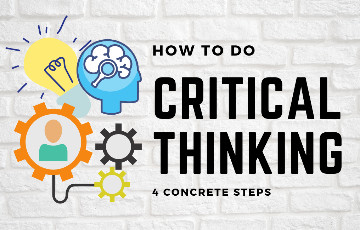
1. Evaluate:
The first step in critical thinking is to evaluate what is before you. You need to ask clear and fundamental questions for analyzing the situation thoroughly. In short, If you have a problem, ask basic questions about the problem like:
- Why did it happen?
- Am I responsible in a way?
- What caused it?
- What’s the possible solution? Etc.
Point is: The ability to get to the heart of the problem shows good critical thinking.
2. Credibility:
Analyzing and testing the Credibility of Data is important in critical thinking. Is it valid data? Is it true? How trustable is the source? What advantages it has? What’s the motive behind this? etc. are questions you need to ask. Drawing conclusions with insufficient or false data without applying logic stops critical reasoning and thinking.
Point is: Critical thinking is to “respond first” by analyzing what the problem/information is. It is not about reacting by just seeing the information. How you respond marks a critical thinking habit.
3. Different Perspectives:
Critical thinking is gathering perspectives outside your own. Have your ideas. Also, get foresight from other people. See the differences and similarities. Analyze the possibilities of finding the right solution.
Point is: Critical Thinking is to listen, assess, and gather fresh perspectives along with yours.
4. Is it A-B or B-A?
For instance, you are sure that ‘A’ caused ‘B’. But, what if, ‘B’ caused ‘A”. Instead of thinking straight, the idea here is to flip the usual thinking angle and see reversely.
Point is: Flipping the thinking angle will give a different perspective to think about the problems.
Takeaway:
Critical thinking is about looking through a wide glass instead of a keyhole. It’s about thinking via different perspectives and angles to find what’s right and apt.


